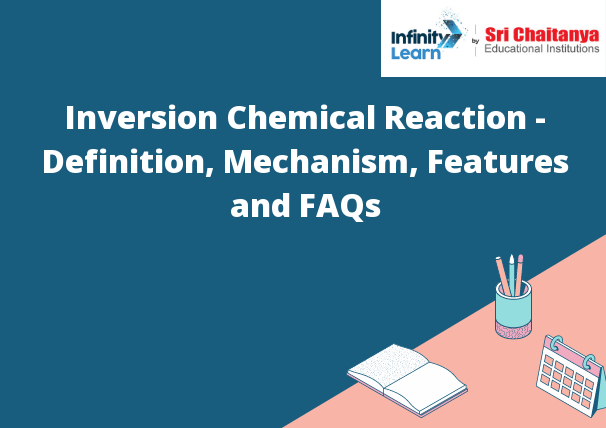Table of Contents
What is Inversion?
An inversion reaction is a type of chemical reaction in which the orientation of the molecule is reversed. This type of reaction is often seen in organic chemistry, where carbon-carbon bonds are broken and new ones are formed. Inversion reactions are typically catalyzed by acids or bases

Reaction Showing Inversion of Configuration
The inversion of configuration is a reaction in which the configuration of a molecule is reversed. This reaction can be accomplished through a number of different mechanisms, including acid-catalyzed rearrangement, ring-opening metathesis, and chiral inversion. In most cases, the inversion of configuration is accompanied by a change in the optical activity of the molecule.
2. Nitrogen Inversion
The nitrogen inversion is a chemical reaction that inverts the configuration of the nitrogen atom in a molecule. In the most common form of this reaction, the nitrogen atom is converted from the N-H form to the N-L form. In the N-H form, the nitrogen atom is bonded to a hydrogen atom; in the N-L form, the nitrogen atom is bonded to a lone pair of electrons.
The nitrogen inversion reaction is used to convert amines into nitriles. In the reaction, an amine is converted to an imine, which is then converted to a nitrile. The reaction is carried out in two steps. In the first step, an amine is converted to an imine by the addition of an aldehyde or ketone. In the second step, the imine is converted to a nitrile by the addition of an acid.
The nitrogen inversion reaction is used to convert amines into nitriles. In the reaction, an amine is converted to an imine, which is then converted to a nitrile. The reaction is carried out in two steps. In the first step, an amine is converted to an imine by the addition of an aldehyde or ketone. In the second step, the imine is converted to a nitrile by the addition of an acid.
Energy Barrier in Inversion Process
The energy barrier in inversion process is the energy required to overcome the attraction between the negatively charged electrons and the positively charged nucleus in an atom. This barrier is due to the electrostatic force of attraction between the charges. The higher the energy barrier, the more difficult it is to invert the electron arrangement.
Quantum Effect on Inversion Process
A quantum effect can be defined as the result of the wave-like behavior of matter that is observed on a small scale. Inversion is a quantum effect that is observed when a material is placed in an external magnetic field. Inversion occurs when the spins of the electrons in the material are aligned with the external field. When inversion occurs, the material becomes a magnet.
Mechanism of Inversion
The mechanism of inversion is the process by which a molecule switches from one conformation to another. Inversion is most often caused by a change in the electron distribution around the molecule. Inversion can also be caused by a change in the shape of the molecule or by a change in the bonding between atoms.
Nucleophilic Substitution-Bimolecular Reaction Mechanism (SN2)
The SN2 reaction mechanism is a substitution reaction that involves the attack of a nucleophile on an electron-rich carbon atom. The nucleophile can be a Lewis base such as water or ammonia, or it can be a Brønsted acid such as hydrochloric acid.
The SN2 reaction mechanism proceeds in two steps:
1. The nucleophile attacks the electron-rich carbon atom, displacing the leaving group.
2. The leaving group is expelled from the molecule.
The SN2 reaction is favored when the electron-rich carbon atom is bonded to a tertiary or quaternary carbon atom. The reaction is also favored when the nucleophile is a strong base, such as ammonium hydroxide.
Hydrolysis of Sucrose
The hydrolysis of sucrose can be catalyzed by a number of different enzymes, including sucrase, invertase, and maltase. The following equation represents the hydrolysis of sucrose into glucose and fructose:
C12H22O11 + H2O → 2C6H12O6
The reaction is exothermic, and so heat is released.








